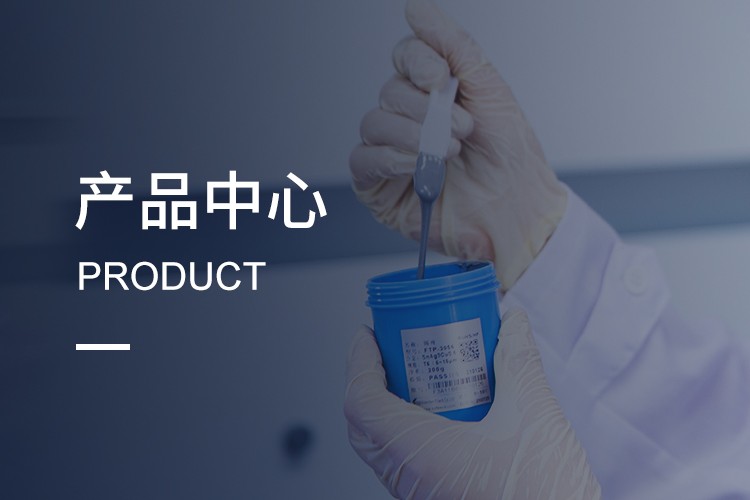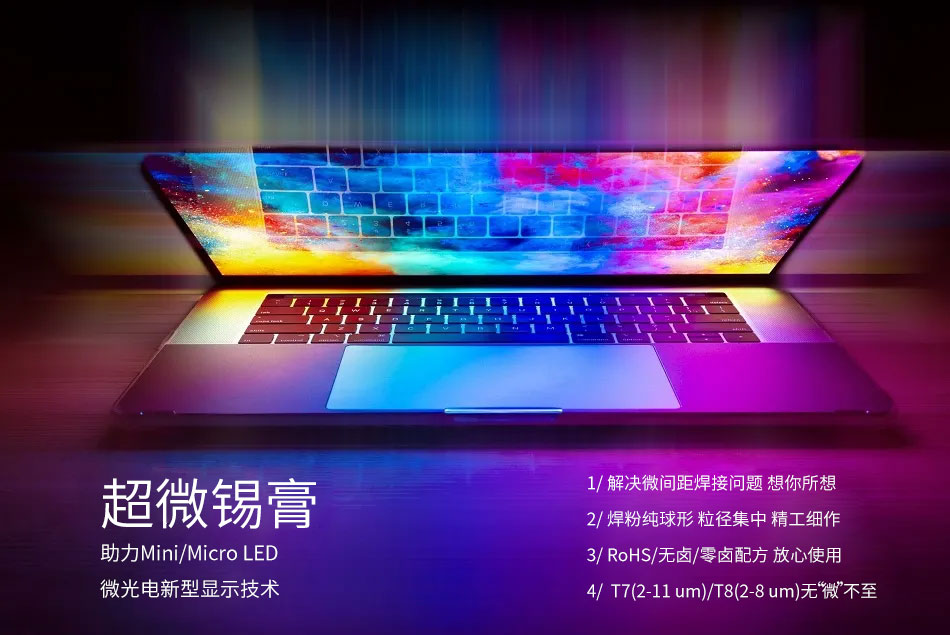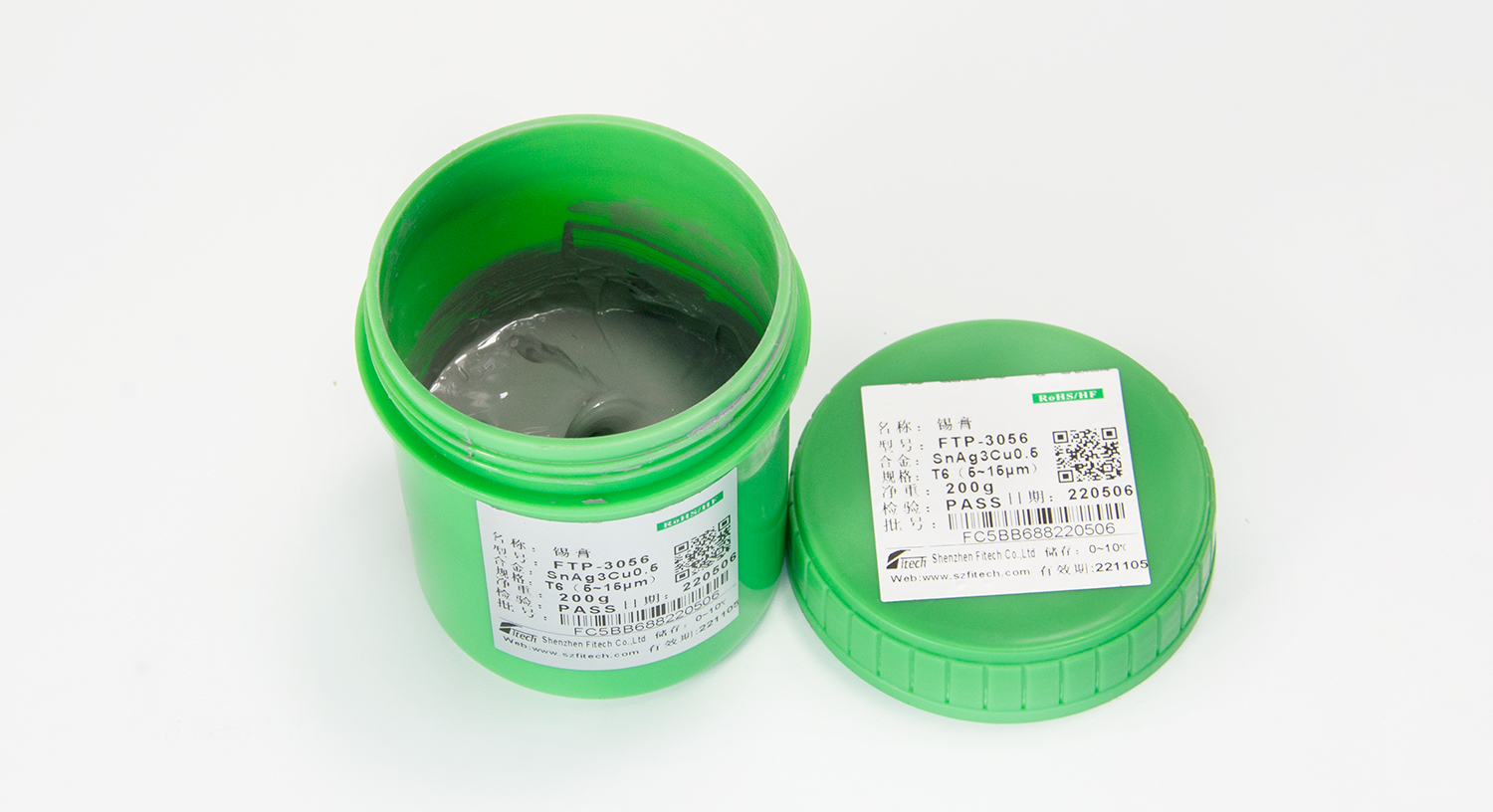T8 Ultra-Fine Solder Paste
With the continuous miniaturization of electronic components, the evolving semiconductor packaging is placing newer requirements on packaging solders. For semiconductor packaging solder paste, an important requirement is the ultra-micronization of solder powder. Especially in the new display industry, the pixel pitch of Mini LED/Micro LED display technology has been reduced to less than 1mm or even less than 0.5mm. The size of display chips has been reduced to 100um or even less than 50um, which puts forward high requirements of packaging solder paste. Currently, several major suppliers are still selling T7(2-11μm), T6 (5-15μm) solder pastes and other solder pastes with particle sizes greater than 15μm. T8 solder paste products are still under development.
Nearly 20 years ago, Fitech took the lead in the development and production of ultra-fine solders in the world and took the lead in launching T8 and T9 ultra-fine powder and solder paste products.
● T8 solder sphericity comparison between Fitech and international counterparts
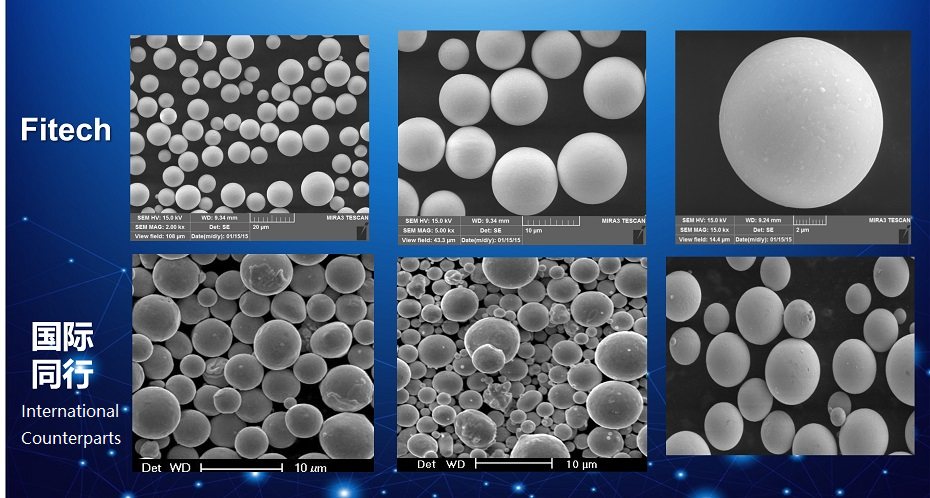
Fitech'sT8 ultra-fine solder powder (2-8μm >94%) is perfect full and round, and the sphericity can reach 100%.
High sphericity and concentrated particle size distribution improve Fitech'sT8 solder paste reliablity.
● Benefits of high sphericity:
◆ Smooth solder release ◆ Uniform solder joints ◆ High reliablity
◆ Reduced likelihood of needle blockage ◆ Longer equipment life
● Viscosity stability of continuous printing solder paste
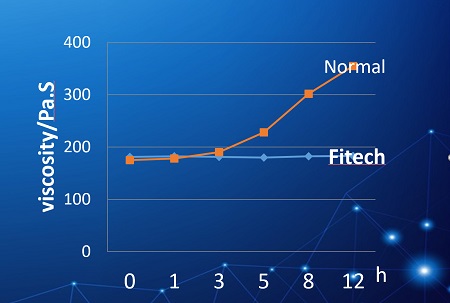
Blue line:Fitech's product
Organe line:Normal product
Fitech's ultra-fine solder powder has better anti-oxidation effect and viscosity stability.
Superior oxidation resistance significantly enhances Fitech's T8 solder paste stability.
FWS-305P
FTD-170
FTJ-574
FTD-305
FTP-305
FTP-170
The main alloy of FWS-305P water-soluble solder paste is tin-silver-copper (SAC305). The water-soluble solder paste product is prepared by mixing T5, T6, T7, or T8 alloy powder with halogen-free environmental-protection flux.
1. The alloy has excellent sphericity, uniform particle size, and low oxygen content;
2. Outstanding halogen-free flux is used;
3. It has superior adhesion performance before soldering;
4. The solder paste has excellent viscosity stability and superior stencil life;
6. It is an ideal solder with extraordinary water cleaning performance for high-reliability micro-bump ultra-fine-pitch packaging.
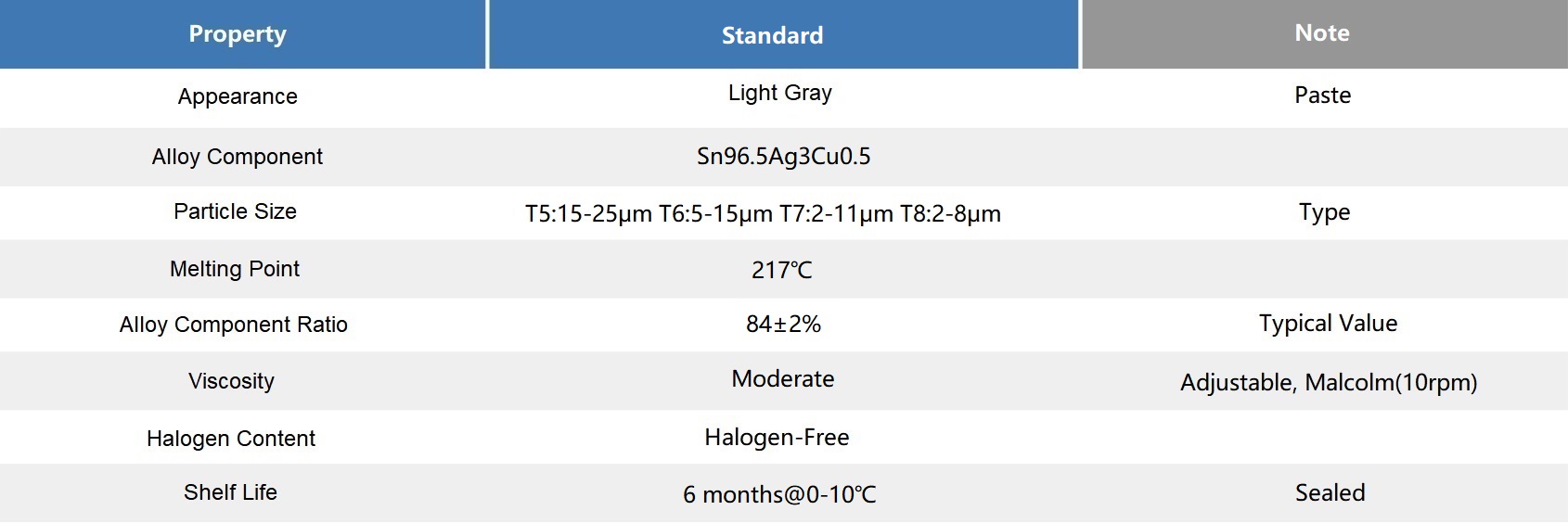

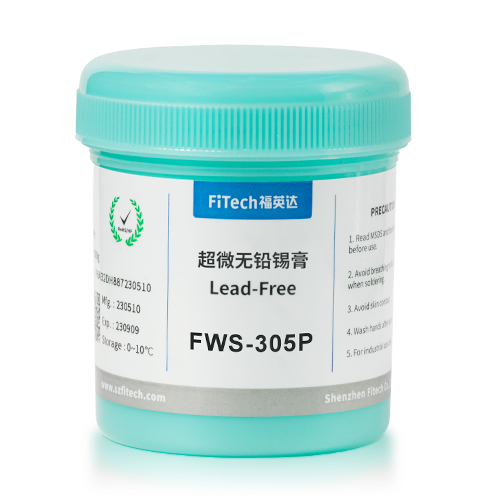
Warming Method: The sealed solder paste should rewarm to room temperature naturally; Rewarm no more than twice.
Warming Time: Return to warm for 2 to 3 hours at room temperature. The actual time required to reach thermal equilibrium varies by vessel size.
Note: Do not open the bottle cap without sufficient rewarming or shorten the rewarming time by using heating equipment.
Operating Environment: The best operating temperature and humidity are 20-25°C and 40-55%RH, respectively. Reflow soldering in a nitrogen atmosphere is recommended.
Cleaning Instruction: There is a small amount of residue around the pad after reflow, which should be cleaned with deionized water as soon as possible. The temperature of deionized water is between 25 and 40℃.
Low-temperature FL170 alloy solder powder with good sphericity, uniform particle size, low oxygen content, and high strength are combined with zero-halogen flux to produce FTD-170 series low-temperature solder paste. Only a small amount of solvent volatilizes during the soldering process. There is no solder ball formation after soldering. The solder paste has excellent performance of residue minimization and wettability. The solder joints generated are strong, plump, and bright. FTD-170 is ideal for low-temperature soldering, especially for low-temperature component mounting.
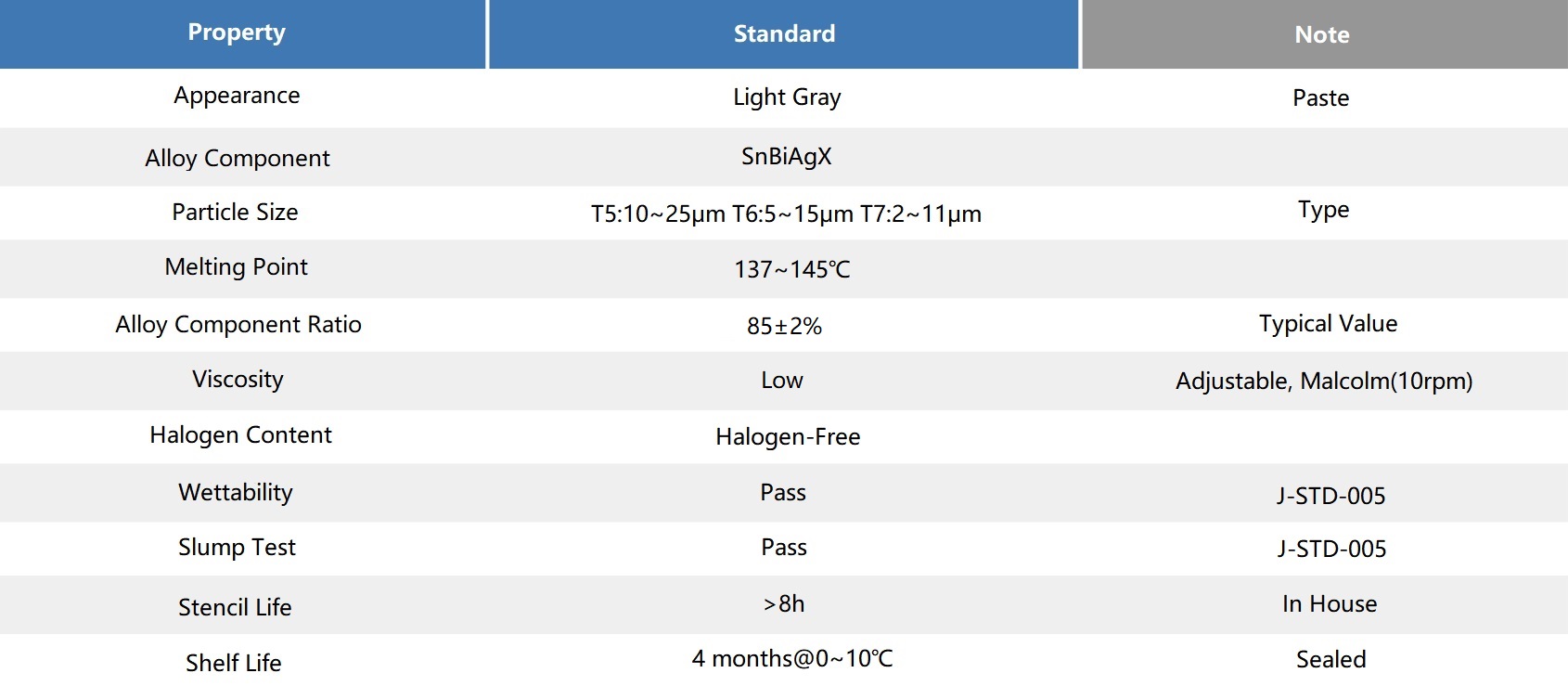

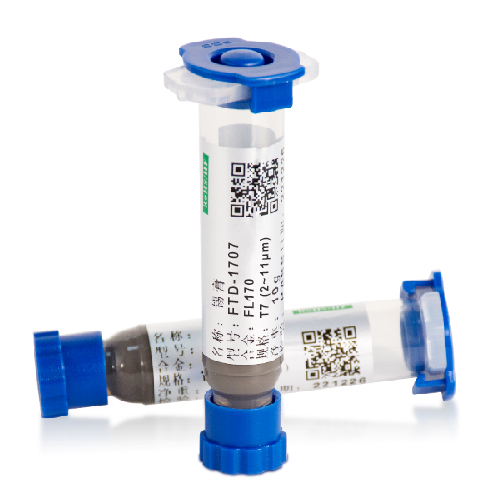
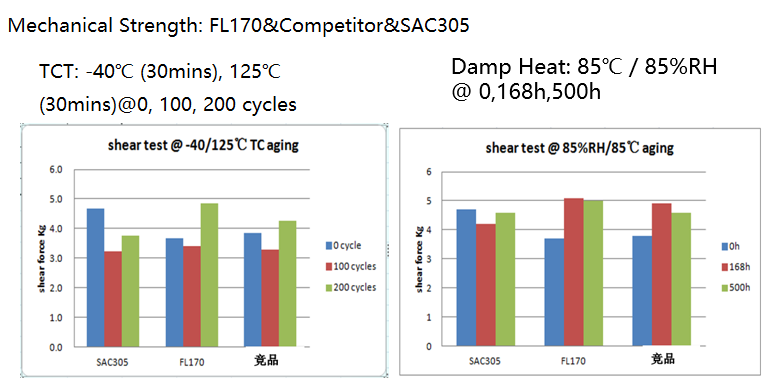
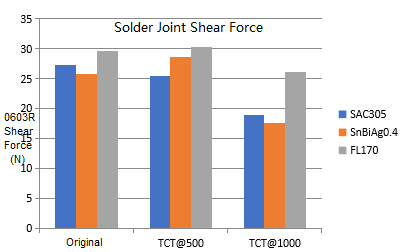
1. Warming Instruction: Solder paste needs to be refrigerated, and the preferred temperature is 0-10°C. When taking out the solder paste from the cold box, its temperature is much lower than the room temperature. If the bottle cap is opened without rewarming, the water vapor in the air will easily condense and adhere to the solder paste.The high temperature exceeding 150°C during soldering increases the vaporization of water, which may cause the phenomenon of "exploding solder" to produce solder balls and even damage the components.
2. Warming Method: The sealed solder paste should rewarm to room temperature naturally; Rewarm no more than twice.
3. Warming Time: Return to warm for 2 to 3 hours at room temperature. The actual time required to reach thermal equilibrium varies by vessel size.
4. Note: Do not open the bottle cap without sufficient rewarming or shorten the rewarming time by using heat sources.
5. Operating Environment: The best operating temperature and humidity are 20-25°C and 40-60%RH, respectively. Reflow soldering in a nitrogen atmosphere is recommended.
6. Operating Time
① Continuous printing time: When adding solder paste continuously: 8 hours; In case of discontinuous addition of solder paste: 4 hours; ② Please add solder paste before the solder paste on the board is almost one third (rolling diameter: 10mm or less); ③ Please keep the solder paste on the plate within 3 hours; ④ If printing is interrupted for more than 30 minutes, please clean the stencil. ⑤ Dwell time after printing: After the solder paste is printed, the components should be mounted as soon as possible and the soldering should be completed when passing the oven to avoid drying out the surface of the solder paste due to long storage, which will affect the component mounting and soldering effects. Generally, the recommended dwell time of solder paste is no more than 4 hours, while the low-temperature bismuth-containing solder paste does not exceed 2 hours. If the printing is interrupted for more than 30 minutes or is temporarily interrupted, the printing template needs to be cleaned. It can continue to work after 1-2 trial printing. The solder paste attached to the narrow space of the opening (≤0.4mm) and the opening of the stencil will gradually dry, which will degenerate the adhesive ability.
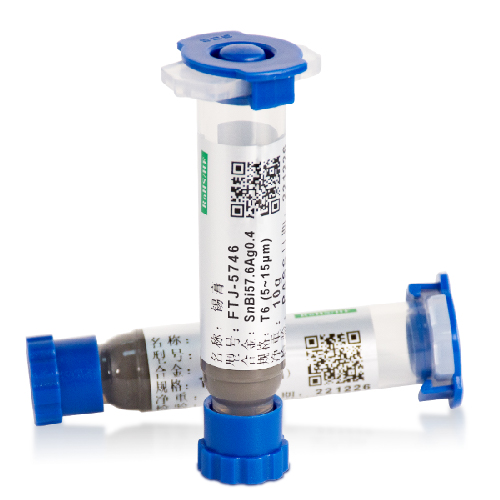
Fitech produces SAC305 solder powder with excellent sphericity, uniform particle size, and low oxygen content, and it is mixed with halogen-free flux to prepare FTD-305 series solder paste. The solder paste has superior adhesion before soldering. Solvent volatilizes very slightly during soldering. Moreover, FTD-305 has outstanding wettability, anti-slump, and residue reduction properties. There is no solder ball formation during soldering. The product is an ideal solder for micro-bump ultra-fine-pitch packaging.
1. Before Curing:
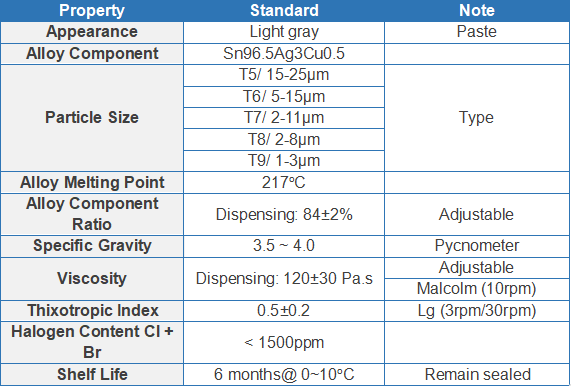
2. After Curing:

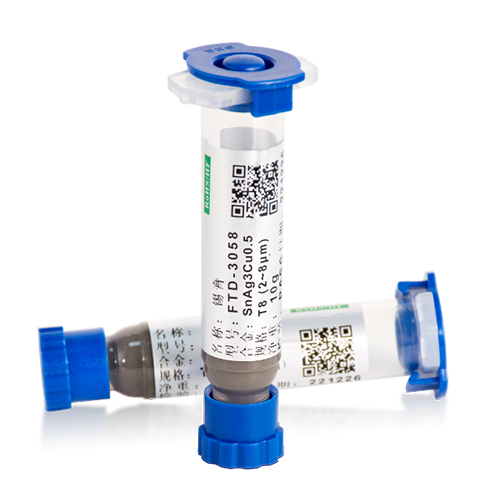
Product DIsplay of FTD-305 (Lead-Free Solder Paste for Dispensing)
Warming Method: The sealed solder paste should rewarm to room temperature naturally; Rewarm no more than twice.
Warming Time: Rewarm 2 to 3 hours at room temperature. The actual time required to reach thermal equilibrium varies by vessel size.
Note: Do not open the bottle cap without sufficient rewarming or shorten the rewarming time by using heating equipment.
Operating Environment: The best operating temperature and humidity are 20-25°C and 40-50%RH, respectively. Reflow soldering in a nitrogen atmosphere is recommended.
Fitech produces SAC305 solder powder with excellent sphericity, uniform particle size, and low oxygen content, and it is mixed with halogen-free flux to prepare FTP-305 series solder paste. The solder paste has a superior adhesion effect before soldering. Solvent volatilizes very slightly during soldering. Moreover, FTP-305 has outstanding wettability, anti-slump, and residue reduction properties. There is no solder ball formation during soldering. The product is ideal for micro-bump ultra-fine-pitch packaging.
1. Before Curing:
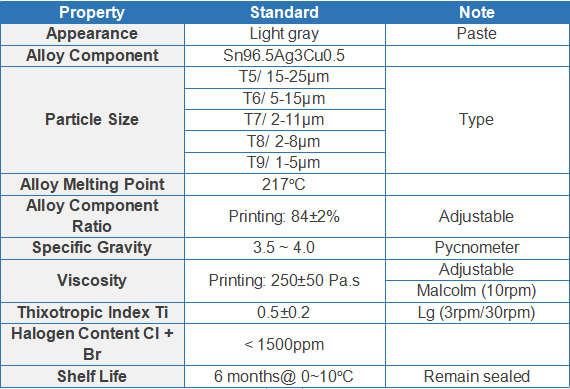
2. After Curing:


Warming Method: The sealed solder paste should rewarm to room temperature naturally; Rewarm no more than twice.
Warming Time: Rewarm 2 to 3 hours at room temperature. The actual time required to reach thermal equilibrium varies by vessel size.
Note: Do not open the bottle cap without sufficient rewarming or shorten the rewarming time by using heating equipment.
Operating Environment: The best operating temperature and humidity are 20-25°C and 40-50%RH, respectively. Reflow soldering in a nitrogen atmosphere is recommended.
Low-temperature FL170 alloy solder powder with excellent sphericity, uniform particle size, low oxygen content, and high strength are combined with zero-halogen flux to produce FTP-170 series low-temperature solder paste. Only a small amount of solvent volatilizes during the soldering process. There is no solder ball formation after soldering. In addition, FTP-170 has an excellent performance in residue minimization and wettability. The solder joints generated are strong, plump, and bright. The product is ideal for low-temperature soldering, especially for low-temperature component mounting.
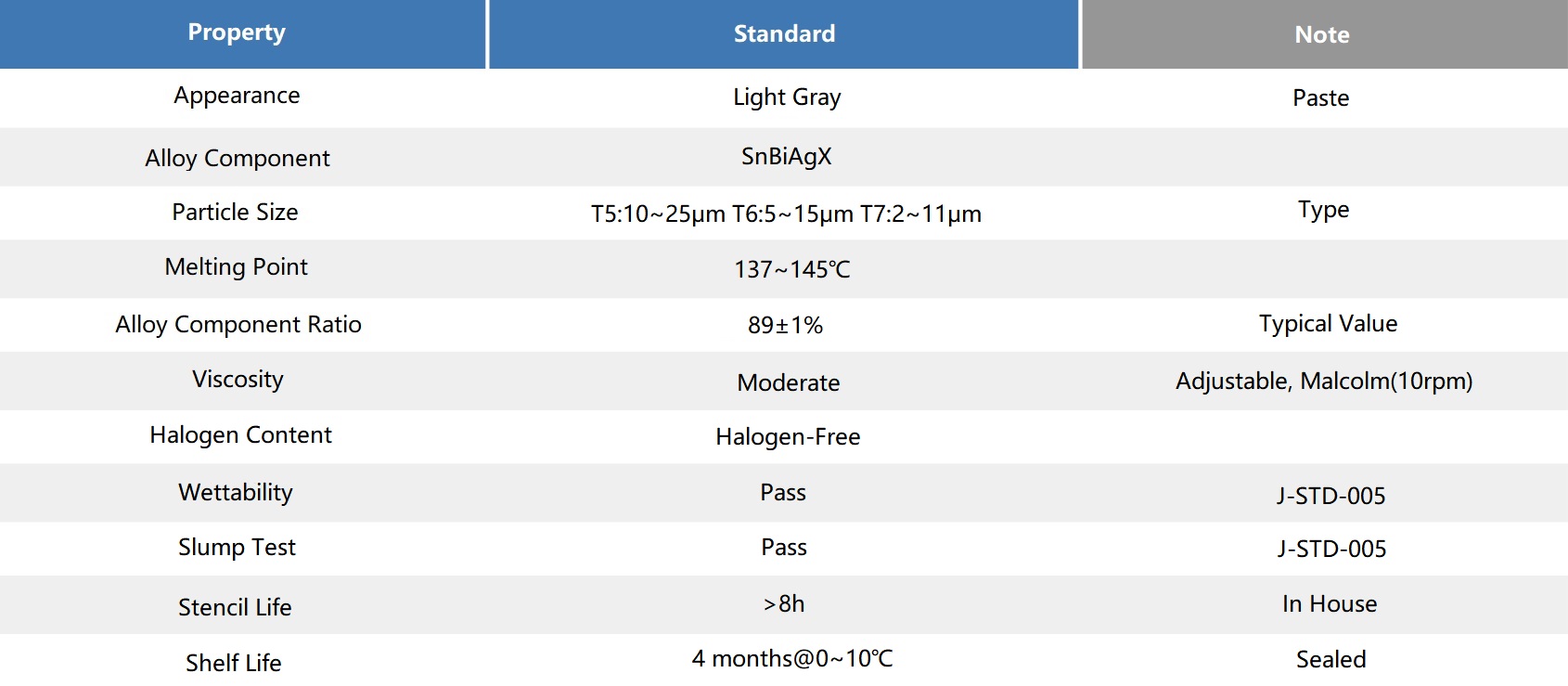


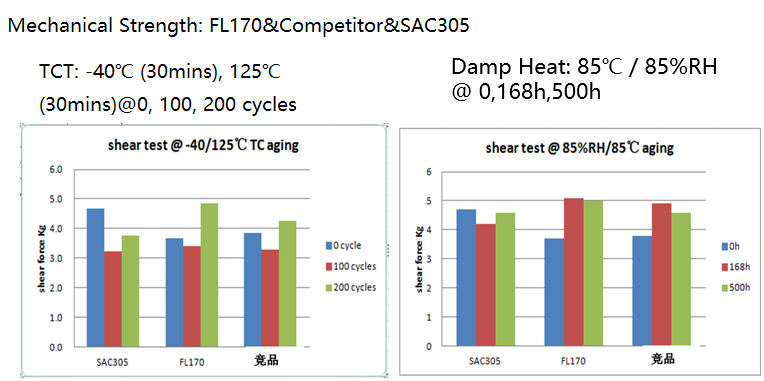
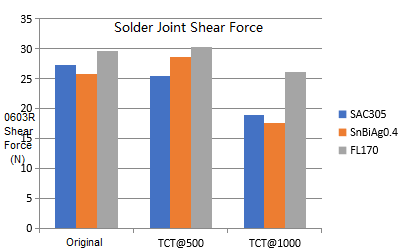
1. Warming Instruction: Solder paste needs to be refrigerated, and the preferred temperature is 0-10°C. When taking out the solder paste from the cold box, its temperature is much lower than the room temperature. If the bottle cap is opened without rewarming, the water vapor in the air will easily condense and adhere to the solder paste.The high temperature exceeding 150°C during soldering increases the vaporization of water, which may cause the phenomenon of "exploding solder" to produce solder balls and even damage the components.
2. Warming Method: The sealed solder paste should rewarm to room temperature naturally; Rewarm no more than twice.
3. Warming Time: Return to warm for 2 to 3 hours at room temperature. The actual time required to reach thermal equilibrium varies by vessel size.
4. Note: Do not open the bottle cap without sufficient rewarming or shorten the rewarming time by using heating equipment.
5. Operating Environment:The best operating temperature and humidity are 20-25°C and 40-60%RH, respectively. Reflow soldering in a nitrogen atmosphere is recommended.
6. Operating Time
① Continuous printing time: When adding solder paste continuously: 8 hours; In case of discontinuous addition of solder paste: 4 hours; ② Please add solder paste before the solder paste on the board is almost one third (rolling diameter: 10mm or less); ③ Please keep the solder paste on the plate within 3 hours; ④ If printing is interrupted for more than 30 minutes, please clean the stencil. ⑤ Dwell time after printing: After the solder paste is printed, the components should be mounted as soon as possible and the soldering should be completed when passing the oven to avoid drying out the surface of the solder paste due to long storage, which will affect the component mounting and soldering effects. Generally, the recommended dwell time of solder paste is no more than 4 hours, while the low temperature bismuth-containing solder paste does not exceed 2 hours. If the printing is interrupted for more than 30 minutes or is temporarily interrupted, the printing template needs to be cleaned. It can continue to work after 1-2 trial printing. The solder paste attached to narrow space of the opening (≤0.4mm) and the opening of the stencil will gradually dry, which will degenerate the adhesive ability.









